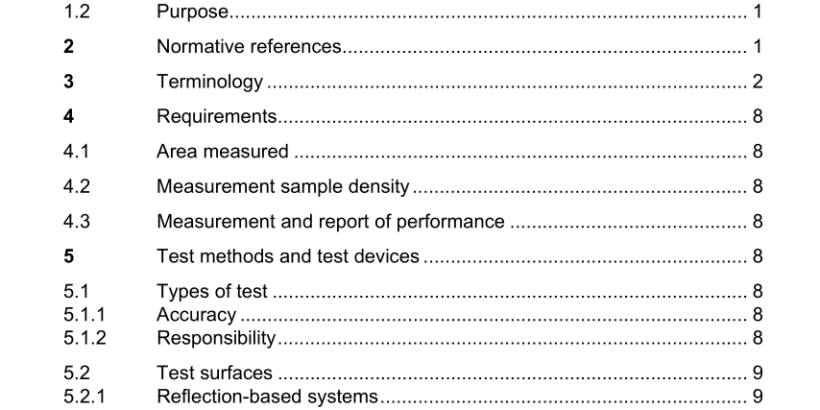ANSI Z80.23-2018 pdf download.Corneal Topography and Tomography Systems – Standard Terminology, Requirements
4.1 Area measured
When measuring an 8-mm spherical surface (i.e., 8-mm radius of curvature), a corneal topographer or tomographer shall directly measure locations on the surface whose radial distance from the corneal vertex is at least 3.75 mm. If the maximum area covered by a corneal topographer or tomographer is reported, it shall be reported as the maximum radial distance from the corneal vertex sampled on this 8-mm spherical surface.
4.2 Measurement sample density
Within the area bounded by the requirement of 4.1 , the surface shall be directly sampled in sufficient locations so that any surface location within the area has a sample taken within 0.5 mm of it.
4.3 Measurement and report of performance
When the performance of a corneal topographer or tomographer for the measurement of either curvature or elevation is assessed and reported, the testing shall be done in accordance with 5.1 , 5.2 and 5.3 and the analysis and reporting of results shall be done in accordance with 5.4.
5 Test methods and test devices
Corneal measurements made with corneal topography and corneal tomography systems collect data from a large portion of the corneal surface and consist of thousands of individual measure- ments. Each measurement is associated with a surface location and, when repeated measure- ments are made, some alignment variability will always exist. This is especially true for human corneas as opposed to test surfaces. While this does not affect the overall validity of measure- ments, it does mean that the same identical points are not measured from one measurement to the next. Therefore, it is best to use a method of analysis that will not overly penalize local, ran- dom error but will give an overall measure of system performance. It is possible and practical to align the system as identically as possible between repeated measurements and then treat the entire measurement (or specified parts of it) as an ensemble and find measures of mean error and standard deviation for the ensemble. Such measures will be used herein to assess corneal topography system performance.
5.1.1 Accuracy
An accuracy test shall be conducted by measuring a test surface specified in 5.2 using the meth- od specified in 5.3.1 and analyzing the measured data using the method specified in 5.4. An ac- curacy test tests the ability of a corneal topography or tomography system to measure the eleva- tion and curvature of a test surface at known locations.
5.3.2 Human corneas
Align the instrument to the eye in the manner specified by the manufacturer of the system. Meas- ure the corneal surface and save the measured data. At each measured point, the data set con- sists of the value of the measured variable and the two-dimensional position of the measurement. Move the corneal topographer or tomographer with respect to the eye and then recenter it. Take a second measurement and save the measured data.
5.4 Analysis of the data
The treatment of the corneal topographic data consists of a comparison between the measured values of two data sets. The structure of the data sets is slightly different for the analysis of accu- racy and the analysis of repeatability, so they are given separately.
5.4.1 Structure of the accuracy data set
For the purpose of accuracy determination, one data set consists of the measured values and measurement locations from a measurement of a known test surface. The other data set con- sists of the known values of the test surface at the locations measured by the instrument and re- ported as part of the data set. The analysis of the paired sets of data is done in accordance with 5.4.3.
5.4.2 Structure of the repeatability data set For the purpose of repeatability determination, a sample population of human corneas is chosen. Two measurements are taken on each cornea in the sample population, in close proximity in time, forming paired measurements. The ensemble of these paired measurements for the entire sam- ple population comprise the data set. The measurement positions for a given cornea will general- ly not be identical and comparison is made between points that have the same nominal locations. The analysis of the paired sets of data is done in accordance with 5.4.3.ANSI Z80.23-2018 pdf download
